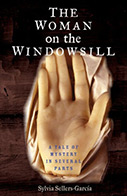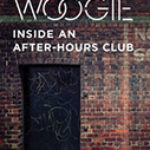The Woman On The Windowsill: A Tale Of Mystery In Several Parts

Author: Sylvia Sellers-García
Publisher: New Haven, CT: Yale University Press, 2020. 281p.
Reviewer: Victor M. Uribe-Uran | November 2020
This is a well-written, nicely organized, and creative micro-historical work built around three inter-related criminal incidents involving the mutilation of female corpses and related display of bodily parts in the windowsills of several central homes in Guatemala City. The incidents occurred in July and September 1800, that is during the late colonial era in Guatemala. The mutilated organs included a pair of severed breasts, a pair of hands, and a pair of ears. A final episode involved the removal of the genitals and buttocks from a female cadaver that was lying in the local morgue waiting to be buried. This latter time the criminal did not seem to have accomplished the public display of the severed organs. In a couple of instances, local authorities managed to identify the corpses that suffered mutilation. Despite proactive and energetic efforts to investigate the incidents, however, they failed to apprehend the criminal. The story is thus somewhat incomplete. But the book’s author is not deterred by the fragmentary nature of her evidence, and her study’s goals are far from being modest.
Rather than satisfying herself with crafting a social historical narrative of the flashy crimes and the context within which they occurred, the author, an associate professor of history at Boston College, takes advantage of the intriguing incidents to reflect on a variety of significant issues. In her own words, she addresses “the demographics of Guatemala City, contemporary conceptions of death and sexuality, patterns of violence against women, the workings of enlightened medicine, the salient iconography of the period, the space of the city, and the balance of power between officials and vecinos [neighbors]” (p. 235). And, there is yet more, because she elaborates as well on the nature of historical archives, the historian’s craft, historical neutrality and objectivity, and even the truth-telling role of literary fiction in the face of limited empirical data. In the last chapter of the book, she also provides an intriguing discussion on the Bourbon state, police, and justice. Apart from her highly informative reflections, scattered throughout the text on the rest of the issues just listed, the final portion on police and justice in late Bourbon Guatemala constitutes one of the book’s most important, and somewhat controversial, takeaways.
Professor Sellers-García claims that because of its “…efficient, orderly, productive, civilized, and modern…” nature, in Guatemala City the colonial government operated as an “…early modern police state” (p. 209). As per her account, this was to a large extent the result of reforms introduced in 1791 to better watch and control Guatemalan neighborhoods. The reforms brought about a sort of climax of policing, reflected in the use of paper records to closely monitor vecinos; reliance on regular patrols (rondas) to surveil the city’s neighborhoods and secure a monopoly on physical violence; and, use of strong bureaucratic mechanisms to track and find suspects and crimes. As happens to her, it has always seemed remarkable to me that colonial authorities, in Guatemala and elsewhere, could succeed at capturing fugitives from justice even years after their crimes, and in locations far away from the crime scene, a true testimony to bureaucratic persistence, administrative coordination and memory, and logistical might. Still, the notion of a seamless and consistent state apparatus, and the presence of a sophisticated “police state” may sound a bit extreme, especially without a closer consideration of mechanisms of resistance, on the part of subaltern and elite sectors alike, to the state’s intrusive gaze, let alone official corruption.
In any case, this is a well-crafted and fairly accessible narrative, full of epistemological and methodological insights, and founded upon the author’s systematic and tireless search for missing pieces of evidence, and her imaginative interpretation of fragmentary data. It is valuable for a variety of university courses, not only general surveys of Latin American history and specialized upper division or graduate courses concerning gender, crime, and society in colonial Latin America, but even courses on historical methods and theory.
Victor M. Uribe-Uran, Professor of History and Law, Chair Department of History, Florida International University


